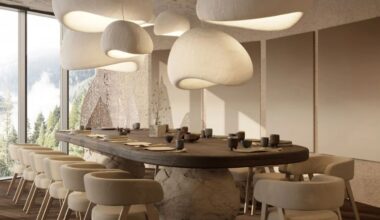In today’s fast-paced work environments, companies are constantly seeking ways to improve employee performance and overall productivity.
While many factors come into play – such as company culture, management style, and technological tools; the impact of interior design on workplace productivity is often overlooked.
Research shows that well-designed office spaces can significantly influence how employees perform, collaborate, and thrive.
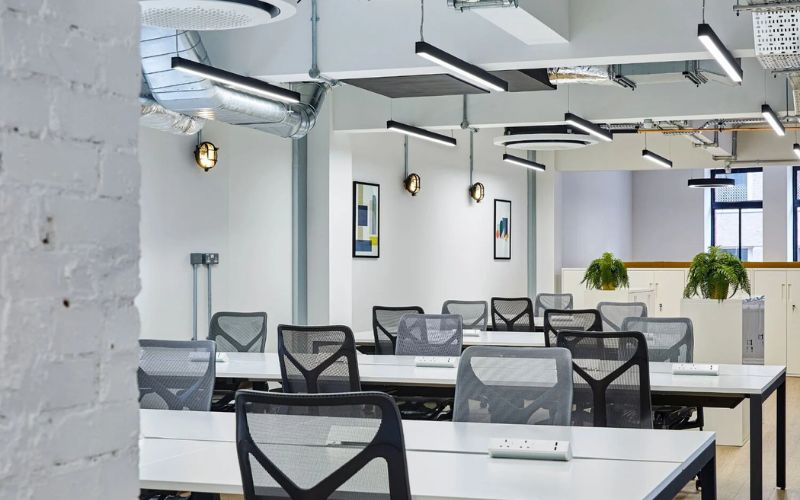
1. Illuminating productivity with the perfect lighting
Proper lighting is essential for creating a productive work environment.
Natural light, in particular, has been proven to boost mood, energy, and focus.
A Harvard study revealed that employees with access to natural light report a 78% improvement in overall wellness and a 70% increase in performance.
Natural light regulates circadian rhythms, which impacts energy levels and cognitive function.
When designing a workspace, prioritize large windows and glass walls to maximize natural light.
In areas where natural light is limited, consider adjustable artificial lighting that can be customized to suit individual needs and reduce strain during long work hours.
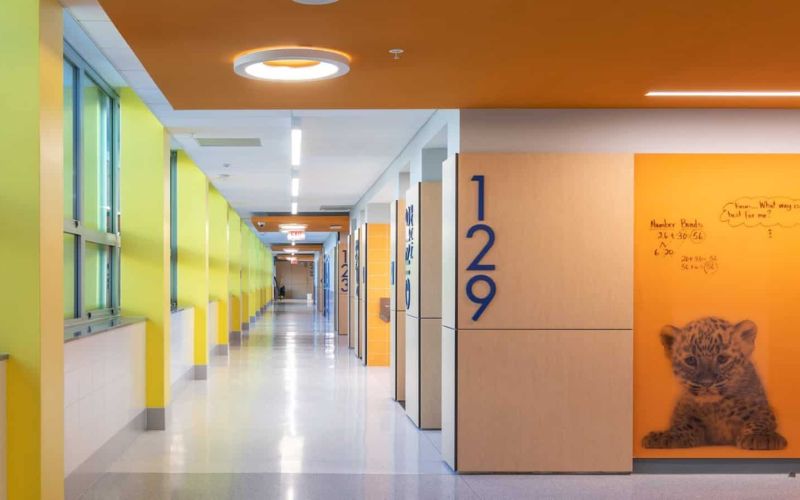
2. Influencing mood and focus with colour
Color psychology plays a significant role in shaping our emotions and behaviors.
The choice of color in a workspace can influence mood, concentration, and creativity.
For example, blue is often associated with calmness and concentration, while green has a balancing effect and is ideal for spaces where decisions are made. Yellow evokes energy and optimism, making it suitable for creative or sales teams.
Neutral colors like gray, on the other hand, are linked to higher rates of burnout and reduced productivity.
Use blue hues for focus-driven tasks and greens in management areas to promote balance. Avoid overusing neutral or overly dull colors that can dampen creativity and energy.
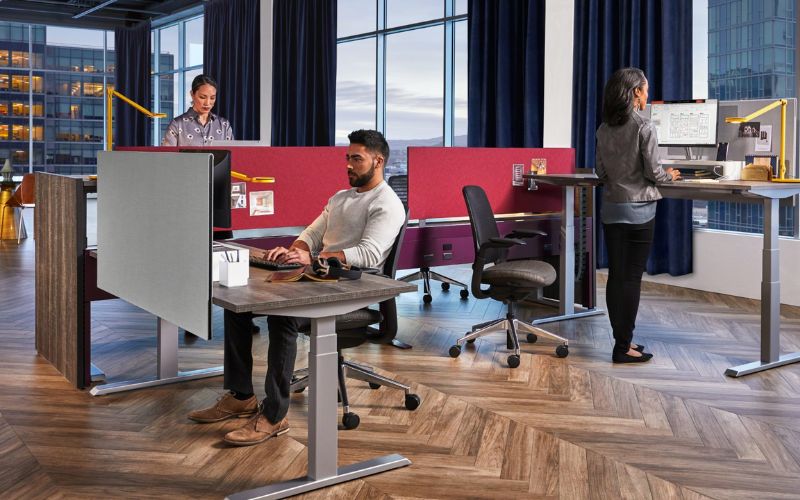
3. Supporting comfort and efficiency
Ergonomic furniture is designed to optimize the body’s posture and movement, reducing strain on muscles and joints.
Ergonomics directly impacts productivity by minimizing discomfort, which in turn reduces absenteeism due to workplace injuries like back pain or repetitive strain injuries.
A study by the Washington State Department of Labor and Industries found that implementing ergonomic solutions reduced musculoskeletal disorders by nearly 60%, while increasing productivity by 25%.
Invest in ergonomically designed furniture, including adjustable chairs, standing desks, and keyboards that promote better posture.
Ergonomic furniture is not just a luxury; it’s a long-term investment in employee health and productivity.
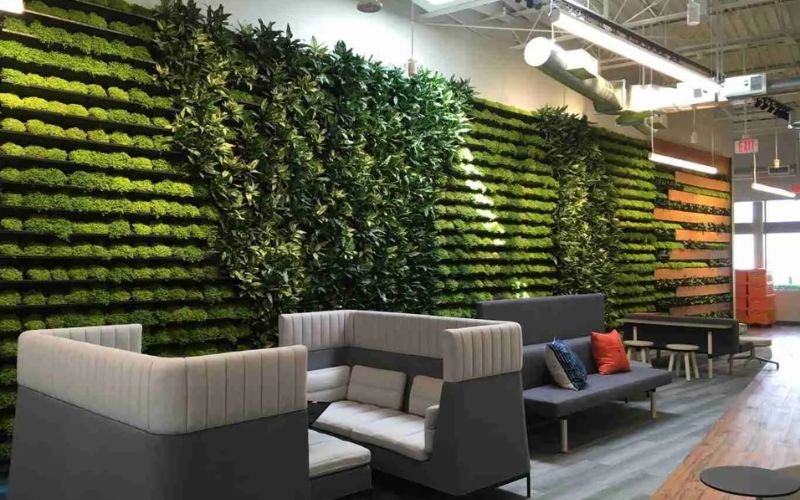
4. Reducing noise distractions
Excessive noise is a well-documented barrier to productivity.
Background chatter, office equipment, and open-plan layouts can make it difficult for employees to focus on their work.
Acoustic panels and soundproofing materials can significantly reduce noise levels and improve concentration.
According to a study published in the Journal of Applied Psychology, reducing noise distractions led to a 20% increase in productivity.
Employees in quieter environments made fewer errors and reported higher job satisfaction.
Incorporate acoustic panels in key areas of the office, especially in open-plan spaces or near common areas like the break room. These panels can absorb sound and help maintain a quieter work environment.
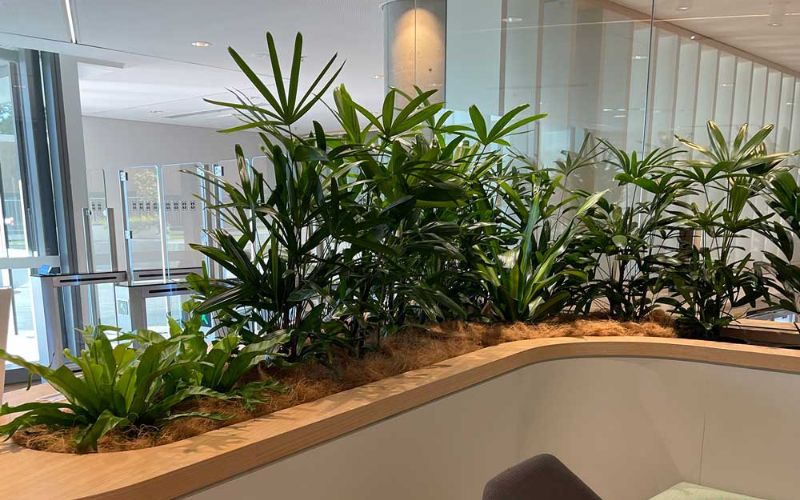
5. Bringing nature indoors with biophilic design
Biophilic design refers to incorporating natural elements such as plants, water features, and natural materials like wood into interior spaces.
The presence of greenery has been shown to reduce stress, improve cognitive function, and enhance mood.
A study conducted in the UK revealed that workplaces with plants increased productivity by 15%.
Similarly, research from the Global Impact of Biophilic Design found that employees working in environments with natural elements reported a 15% boost in creativity and a 6% increase in productivity.
Add plants to the workspace, especially in common areas or near windows. Not only do plants purify the air, but they also create a more visually appealing and calming environment.
Use natural materials like wood and stone to enhance the biophilic effect.
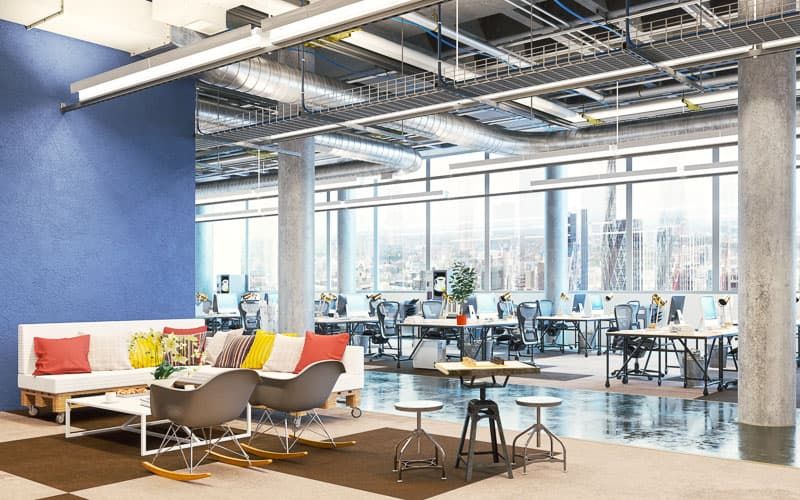
6. The psychological impact of space and layout
A well-planned office layout not only affects the flow of traffic but also influences collaboration and communication.
Open-plan layouts, for example, are ideal for promoting teamwork but can sometimes lead to increased noise and distractions.
Private spaces or quiet zones, on the other hand, are essential for tasks requiring focus and concentration.
Create flexible work zones within the office. Offer open areas for collaboration, but also provide enclosed, quiet spaces for tasks that require deep focus.
This balance will ensure that employees can work in environments best suited to their specific needs.
Designing for productivity and well-being
Interior design is a powerful tool that influences workplace productivity, employee satisfaction, and overall business performance.
By understanding the science behind design elements like lighting, temperature, color, and ergonomics, companies can create a workspace that not only boosts efficiency but also enhances the well-being of employees.
A well-designed office space leads to higher productivity, reduced absenteeism, and a more motivated workforce, all of which contribute to a company’s long-term success.
When undergoing a renovation project such as this, finding the right partners is crucial… and that’s where we can help.
Using our service, we can find the perfect design expert that specializes in your desired area of work – completely free of charge!
Contact us today to apply for your free consultation.


